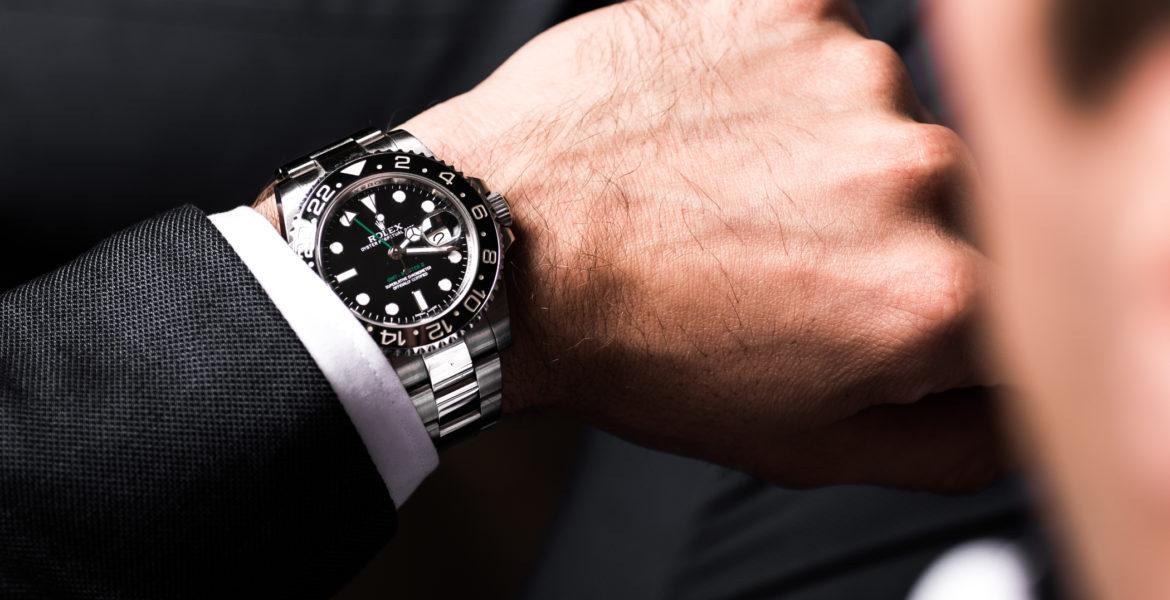Originally built for pilots in partnership with the groundbreaking airline Pan Am (now defunct), the Rolex GMT Master is one of the company's most iconic creations and perhaps the best-known family of travellers' watches in the world. With its instantly recognisable two-tone rotating 24-hour bezel, the watch has been popular throughout its long history, but it has undergone a number of changes that can make all the difference for those hunting for the perfect model.

The Rolex GMT-Master: Should you choose vintage or modern?

The Rolex GMT History
It all began with reference 6542, the first GMT Master, which went on sale in 1954. This model is known for its problematic Bakelite bezels that cracked easily and were changed to aluminium early on. By 1959, Rolex had unveiled the ref. 1675, the best known GMT Master, which remained in production for two whole decades until 1980. Its successor, the 16750, was produced until 1988, but by this time the brand had released another version alongside: the GMT Master II. Though they remained in simultaneous production for some time, today the Master II is the only version for sale, with new watches sporting a range of stunning upgrades that distinguish them from their erstwhile predecessors.
It can be a tough choice to decide between a classic vintage GMT and a shiny new one. In many ways they are the same watch, as the core Rolex GMT Master design and function has remained constant since the beginning. But the devil is in the detail, and many collectors will obsess over a host of tiny variations between models – or even quirks unique to a specific watch. Let's begin with the most common vintage choice, the 1675. This model introduced a crown guard and those four beloved words on the dial: “Superlative Chronometer Officially Certified." Over the course of its illustrious career, Rolex 1675 dial variations have been common, with different dial and bezel colours or case materials.

We can see several immediate differences when we compare these older pieces with today's GMT Master II, the ref. 116710 (and related family members). Over the years, these pieces have gained advances such as the sapphire crystal, Super Luminova (replacing tritium) and solid end link bracelets, while losing their case pin-holes. The Master II still comes in a 40mm case, same as the 1675, but it has been designed to look larger thanks to its Maxi dial with big indexes and hands, as well as chunkier lugs and crown guards than previous models. It sports state-of-the-art ceramic in the bezels, now in a range of colours, with just 24 clicks for easier functionality. These watches boast patented Triplock crowns, “Easy-link”, non-rattling bracelets with polished centre links, and anti-reflective Cyclops lenses.
As important as many of these exterior changes are, arguably the biggest developments in the series have occurred in the Rolex GMT Master's movements. The ref. 1675's first calibre, the 1565, was one of the finest of its time – but technology has developed greatly in the years since. The 1565 was soon replaced by the 1575, which itself was upgraded with hacking functionality in 1971. Later GMT Master models introduced calibres 3075 and 3175, with a quickset feature and higher bph. There are already significant differences if you compare the Rolex 16700 vs 16710 (ie the Master I vs Master II models in the 80s and 90s). The early Master II watches had superior calibres, the 3085 and 3185, allowing for independent 24-hour hands that could be set without stopping the time.

Today, the Master II's movements are better yet. The modern cal. 3186 features cutting-edge horological tech, including the renowned Parachrom Bleu hairspring, made of futuristic materials that prevent it being affected by changes to temperature or magnetic fields. All watches are guaranteed to operate within -2/+2 seconds per day for at least five years – the result of stringent testing by Rolex above and beyond the requirements for chronometer certification.
Both vintage and modern GMT Masters are luxury watches that can be good investments. Rolex GMT Master II retail prices for modern references have gone up thanks to the new technology and materials, especially the ceramic bezel and the gold cases in some models (eg 2014's headline-grabbing Pepsi model). Meanwhile, vintage watches do not always appreciate enormously because they were produced in relatively large numbers and are common on the used watch market. Nevertheless, there are some significant exceptions – especially when it comes to special features, from “stick”, “spider”, “nipple” or “matt” dials to “root beer” bezels or the so-called Tiger Eye. These variants can be sought very competitively by collectors. The oldest GMT Masters with Bakelite bezels are the rarest and most legendary of all.
Ultimately, your choice of GMT Master will come down to personal preferences. The great thing about this peerless watch collection is that whatever you pick, it is sure to be a stunning and prestigious timepiece with a long and celebrated history in the watch industry. The GMT Master has captured the hearts and minds of watch lovers for more than sixty years, leaving behind a truly exceptional legacy.

Not only for the frequent flyers: the Rolex GMT Master II Ref. 116710LN has an aura of sporty elegance, whilst remaining a tool watch with the typical Rolex characteristics. The sports models in stainless steel from Rolex, including the GMT Master II, have particularly strong value retention.
Discover the Rolex GMT Master